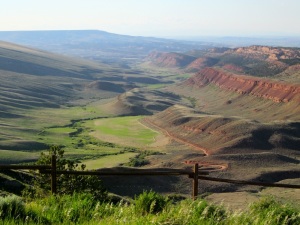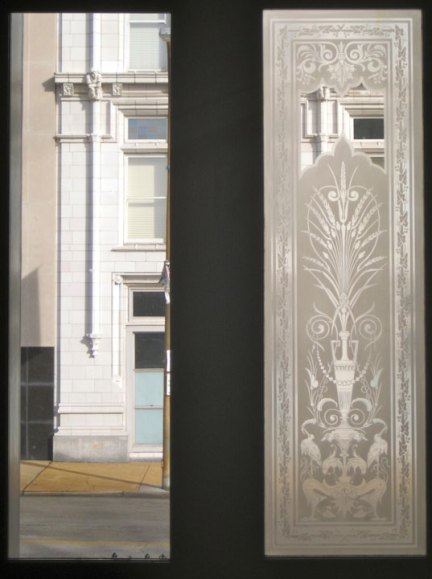By Andy Hahn
A few weeks ago Campbell House docent Tom Gronski and I returned from a 2,500 mile trip West, visiting the important sites of Robert Campbell and Rocky Mountain fur trade.

Red Rocks Canyon on the road up to the South Pass through the Wind River Range of the Rockies.
We followed the route of the Oregon Trail, which had been blazed by Campbell and other mountain men and fur traders during the 1820s and 30s. Our first stop was at the Joslyn Art Museum in Omaha, Nebraska. The Joslyn holds one of the most important collections of art of the American West, including works by Karl Bodmer, Alfred Jacob Miller and George Catlin.
Following a 500-mile drive along the Platte River through Nebraska we arrived at Fort Laramie, where we met Alan McFarland, Robert Campbell’s g‑g-g-grand nephew, fresh off the plane from his home in Northern Ireland. Alan has a special interest in his uncle’s career in the fur trade and has made numerous research trips to America. Fort Laramie was the perfect place for our meeting because Campbell and his partner Bill Sublette founded Fort Laramie (originally called Fort William) in 1834. At this National Historic Site we were able to view an authentic fur trade encampment recreated by members of the American Mountain Men. The group later created tableau vivant from one of Alfred Jacob Miller’s artworks depicting a fur trade camp.
A little further west we followed the Sweetwater River across Wyoming towards the Wind River Mountain Range and the South Pass. Bill Sublette was the first person to take a wagon this far into the Rocky Mountains in 1830, setting a course for thousands that would follow the Oregon and Mormon Trails. The next few days were spent in the vicinity of Jackson, Wyoming where we visited most all of the sites of the Rocky Mountain Rendezvous. The highlights included visits to the Museum of the Mountain Man where we were able to see some original Campbell letters and Pierre’s Hole, site of the 1832 Rendezvous and subsequent battle. Campbell heroically saved his friend Bill Sublette’s life during the battle as recounted by Washington Irving in the Adventures of Captain Bonneville. Our trip ended with visits to other Rendezvous sites at Bear Lake, Cache Valley and finally Fort Bridger.
Enjoy the pictures and follow us West!









